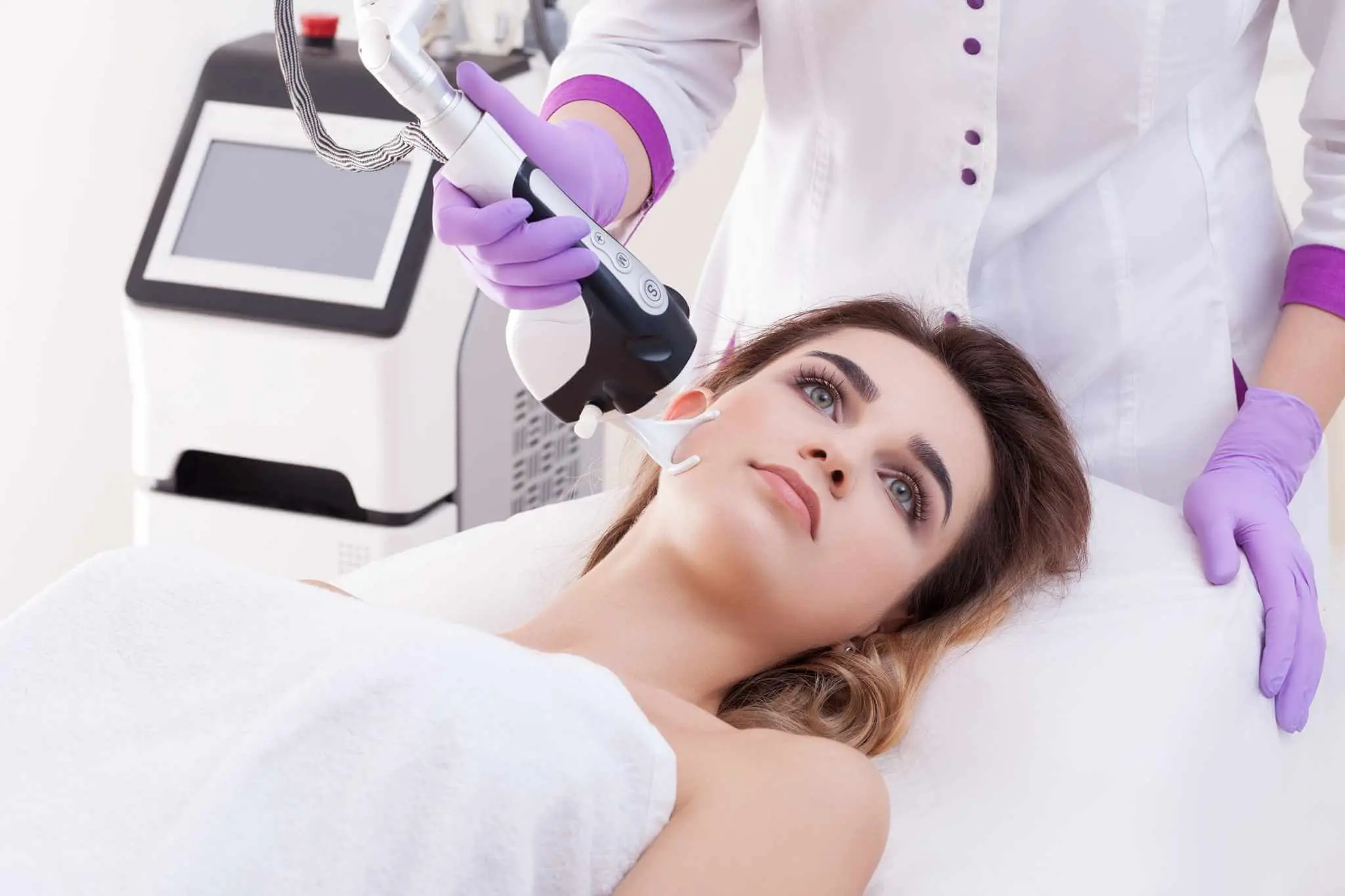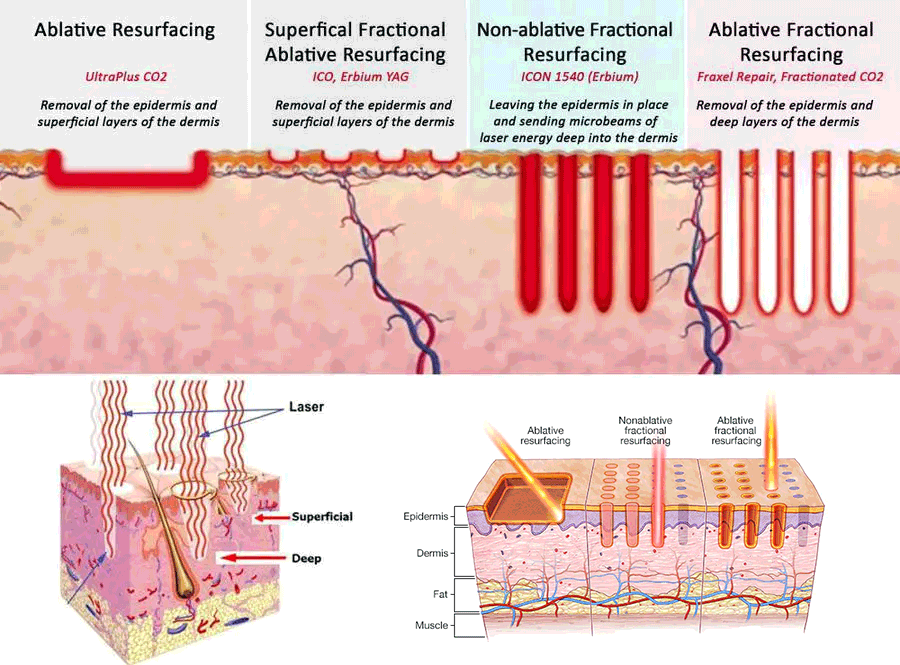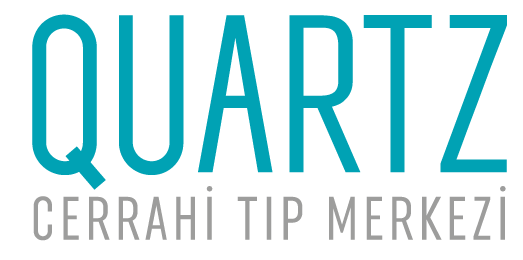
Contents

Laser skin resurfacing is a popular cosmetic treatment that helps rejuvenate the skin by reducing wrinkles, age spots, acne scars, and sun damage. Thanks to modern advancements like fractional laser resurfacing, this procedure has become more precise, less invasive, and easier to recover from.
What Is Laser Resurfacing?
Laser resurfacing is a skin rejuvenation procedure that uses targeted light energy to remove damaged skin layers, stimulate collagen production, and reveal a smoother, more youthful complexion. It can be classified into three main types:
- Ablative Laser Resurfacing: This method removes the top layer of skin (epidermis) and heats the underlying layer (dermis) to promote collagen formation. Common options include CO2 laser resurfacing and Erbium laser resurfacing.
- Non-Ablative Laser Resurfacing: Instead of removing skin layers, this method heats the underlying tissue, making it ideal for those who want less downtime. Technologies such as Er:YAG and IPL skin resurfacing are commonly used.
Fractional Laser Resurfacing: A more modern technique that treats only a fraction of the skin at a time, creating micro-injuries to stimulate healing while preserving healthy skin areas. It combines the effectiveness of ablative methods with faster healing.
Who Is a Good Candidate for Laser Skin Resurfacing?
You may benefit from laser skin resurfacing if you have:
- Fine lines or wrinkles (especially around the eyes and mouth)
- Sun-damaged skin
- Acne scars or surgical scars
- Uneven skin tone or texture
- Enlarged pores or dull skin
Laser resurfacing is suitable for light to medium skin tones. Those with darker skin may still be eligible but require customized treatment plans to reduce the risk of pigmentation changes.
Benefits of Laser Skin Rejuvenation
- Visibly smoother and firmer skin
- Reduction in fine lines and wrinkles
- Removal of age spots and sun damage
- Improved skin tone and texture
- Long-lasting collagen stimulation
What to Expect During the Procedure
Laser resurfacing is typically performed under local anesthesia or sedation, depending on the area and technique used. The session may last between 30 minutes to 2 hours.
After the procedure, the treated area may feel warm, red, and slightly swollen—similar to a sunburn. The recovery time depends on the type of laser used:
| Laser Type | Recovery Time |
|---|---|
| Ablative | 7–14 days of healing, followed by gradual improvement over several weeks |
| Non-Ablative | Minimal downtime with mild redness for 1–2 days |
| Fractional | 3–7 days of mild crusting and redness |
Laser Resurfacing Side Effects and Risks
Although considered safe, laser resurfacing may involve certain side effects such as:
- Redness and swelling
- Skin sensitivity
- Temporary acne breakouts
- Hyperpigmentation or hypopigmentation
- Rare risk of infection or scarring
Choosing a qualified and experienced medical professional can significantly reduce these risks.
How Many Sessions Will You Need?
The number of sessions depends on your skin condition and the type of laser used:
- Ablative laser resurfacing may deliver results in one session.
- Non-ablative and fractional lasers usually require 2–4 sessions spaced a few weeks apart.
Cost of Laser Skin Resurfacing
The laser resurfacing cost varies based on the treatment area, type of laser, clinic location, and the expertise of the provider. On average, prices range from $500 to $3,000 per session.
While this may seem like a significant investment, many patients find the long-lasting results well worth the cost.
Before and After Results
Patients typically see:
- Smoother skin texture
- Reduced wrinkles
- Faded age spots and pigmentation
- Healthier, more radiant skin tone
Laser resurfacing before and after photos often show a dramatic improvement in skin clarity and youthfulness, especially after a full treatment cycle.
Laser skin resurfacing is one of the most effective non-surgical solutions for achieving radiant, youthful skin. Whether you’re looking to erase years of sun damage, minimize fine lines, or improve skin texture, this advanced treatment offers customized solutions with proven results.
To find out if you’re a candidate for laser resurfacing, consult with a qualified dermatologist or cosmetic specialist. Personalized assessments ensure you receive the most effective technique—whether ablative, non-ablative, or fractional laser resurfacing.
Frequently Asked Questions (FAQ)
Is laser resurfacing painful?
Laser resurfacing is generally well tolerated. You may feel a mild stinging or heat sensation during the procedure. Local anesthesia or a numbing cream is typically used to keep you comfortable.
How long does it take to recover from laser skin resurfacing?
Recovery time varies by laser type:
- Ablative lasers: 7 to 14 days for initial healing
- Non-ablative lasers: 1 to 3 days with minimal redness
- Fractional lasers: 3 to 7 days of mild crusting and redness. Full skin renewal may take several weeks.
What are the side effects of laser skin resurfacing?
Common side effects include redness, swelling, peeling, and sensitivity. Rare risks include infection, hyperpigmentation, or scarring—especially in darker skin tones. Proper aftercare can minimize these risks.
How many sessions do I need?
The number of sessions depends on your skin concern and the laser type:
- Ablative treatments often require only one session.
- Non-ablative and fractional lasers may need 2–4 sessions for optimal results.
How much does laser skin resurfacing cost?
The average cost ranges from $500 to $3,000 per session, depending on the technology used, treatment area, and provider’s experience. Some clinics may offer package deals.
Can laser resurfacing treat acne scars?
Yes. Acne scar laser treatment is one of the most common uses of fractional and ablative lasers. These treatments can significantly smooth and improve scarred skin over multiple sessions.
Is laser skin resurfacing safe for dark skin?
Laser resurfacing can be performed on darker skin tones with caution. Non-ablative and fractional lasers are generally safer, but treatment must be tailored by an experienced practitioner to avoid pigmentation issues.
When will I see results?
Initial results may appear within 1–2 weeks, with full improvement visible in 2–3 months as collagen continues to rebuild.
Can laser resurfacing remove age spots and fine lines?
Yes. Age spot laser removal and fine line reduction are among the top benefits of laser skin rejuvenation, especially with fractional and ablative lasers.
Is there downtime after fractional laser resurfacing?
Yes, but it's typically minimal. You may experience 2–5 days of redness, flaking, or slight swelling. Compared to ablative lasers, fractional lasers allow for faster recovery.
![dr.leyla-arvas-800×1000.jpg[1] dr.leyla arvas](https://www.quartz.com.tr/wp-content/uploads/2024/11/dr.leyla-arvas-800x1000.jpg1_.webp)
Author : Op. Dr Leyla ARVAS
Dr Leyla Arvas is an internationally recognised specialist in aesthetic surgery based in Istanbul. Graduated in 1998 from Istanbul University Faculty of Medicine, she has developed her expertise by studying in Taiwan, Japan and Spain during her 20 years of experience.
This article November 19, 2025 was updated on
Editor: admin@quartz.com.tr



